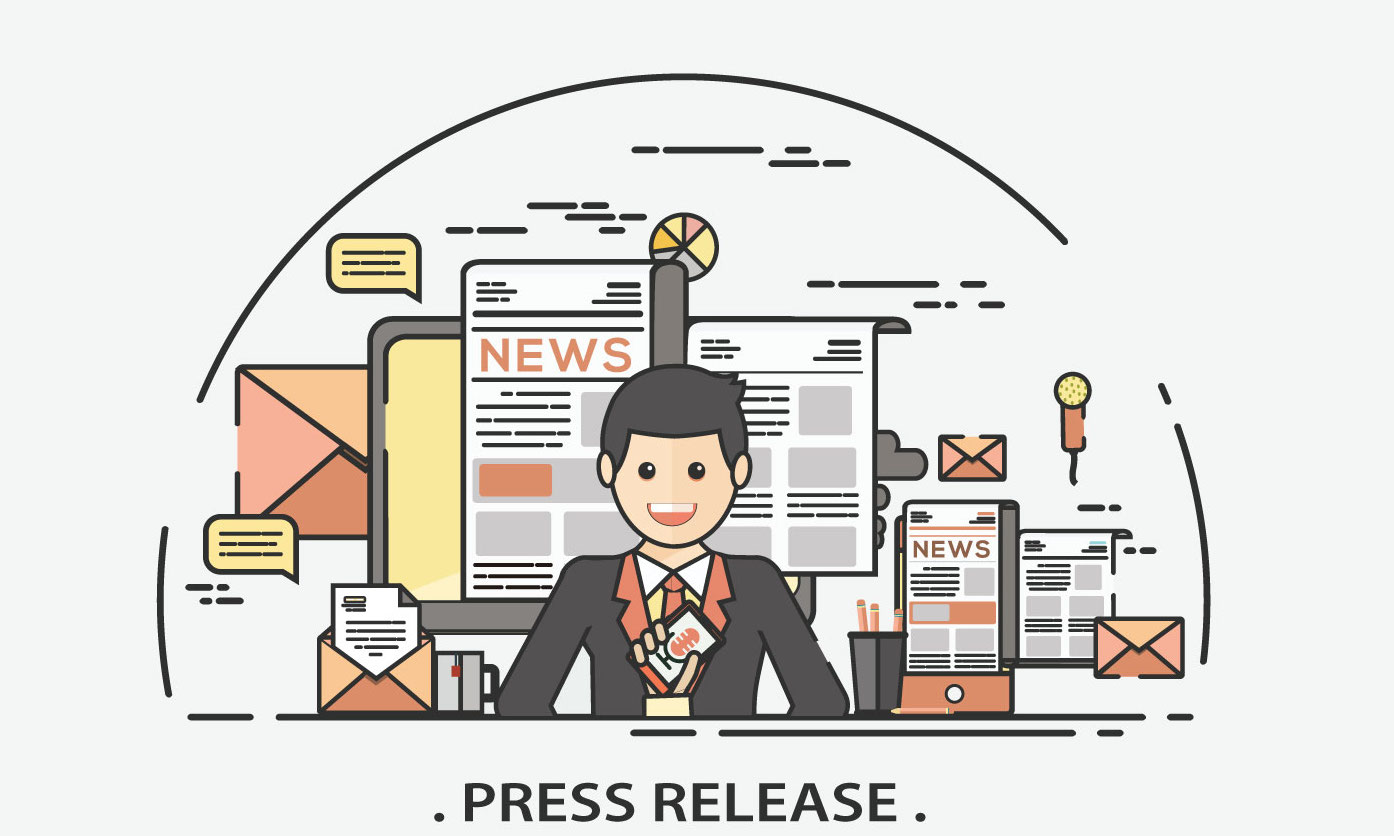Press Release Distribution: Maximize Your Brand Visibility and Connect with New Audiences for Greater Success

In today’s competitive business landscape, press coverage plays a crucial role in helping small businesses thrive. However, getting the desired press coverage requires proactive efforts. If you’re a business owner seeking to enhance your brand visibility and generate press coverage, this article will guide you through the process of creating, pitching, and distributing a press release effectively.
What is Press Release Distribution?

Press release distribution involves circulating your press release to various outlets, such as journalists, publishers, and press members. A well-crafted and strategically distributed press release can expose your brand to new audiences and boost visibility through features in podcasts, blogs, radio and TV broadcasts, and newspapers. While posting your press release on your website is important, it’s not enough to reach a wider audience. Press coverage helps get your business or brand name into the public forum, building brand awareness. In fact, 68% of businesses report enhanced visibility after publishing press releases.
Distributing a press release offers several benefits, including:
- Boosting SEO: With over 8.5 billion Google searches made every day, implementing SEO tactics in your marketing strategy is crucial. Press release distribution can help you land coverage in major publications, which often link back to your website, boosting your search engine visibility.
- Driving Local Foot Traffic: If you have a brick-and-mortar shop, press release distribution can help attract customers to your store. Whether you’re running an event or launching a sale, measuring foot traffic after distributing a press release allows you to gauge its success.
- Generating More Sales: A targeted press release can significantly impact your bottom line if you’re launching a new product or an exclusive line. By drumming up interest and setting your brand apart from competitors, you can take advantage of busy shopping days, such as Black Friday or Cyber Monday, by contacting retail journalists to highlight your offers.
Should You Use Press Release Distribution Services?
While there are various approaches to press release distribution, utilizing a press release distribution service can be a time-saving solution, especially if you have a tight schedule and limited time to reach out to publishers. These services enable you to send your release to relevant journalists without the need for manual work on your part. Here are some top press release distribution services to consider:
1. Newswire

Newswire is a top-rated distribution service that can help your press release reach significant news outlets such as NBC, MarketWatch, and NBC. The service offers multitarget layering, allowing you to reach your desired audience at the local, state, and regional levels. With a strict editorial process, Newswire ensures that your press release is error-free when it reaches consumers.
Pricing: Newswire’s pricing starts at $349 for the news digital plan and increases based on the number of press releases and industries you’re targeting.
Best For: Businesses looking to expand beyond the local market and reach a broader national audience.
2. eReleases

eReleases boasts a media database of over 1.7 million contacts. The service has nurtured relationships with publishers and reporters for over 20 years, ensuring that your press release reaches influencers and industry-specific outlets. eReleases also optimizes your press release using white hat SEO practices, increasing its chances of ranking on search engines.
Pricing: eReleases pricing starts at $399.
What We Like: Detailed reports with engagement, audience, and traffic metrics are provided after distribution.
3. EIN Presswire
EIN Presswire is an affordable distribution service with a quick review process. They typically approve your release within an hour during regular weekday hours. EIN Presswire offers access to a dashboard that populates with data two hours after distribution. The service is a high authority website that can earn you backlinks, positively impacting search engine visibility.
Pricing: EIN Presswire’s pricing starts at $99.95 per release and goes up to $999 for bundles.
What We Like: EIN Presswire is budget-friendly and provides a quick solution for small businesses.
4. Meltwater
Meltwater offers a Press Release Distribution Service as part of its media intelligence and PR solutions suite. With established partnerships with a vast network of media outlets, Meltwater allows businesses to distribute press releases to journalists, bloggers, and other relevant stakeholders. The service also integrates its distribution service with its media database, providing information on journalists, editors, and media contacts.
Pricing: Contact Meltwater for pricing details.
What We Like: Meltwater provides tools and templates to help businesses format their press releases effectively. It also offers analytics and reporting features to track the performance of press releases.
These are just a few examples of press release distribution services available in the market. Each service offers unique features and pricing, so it’s crucial to explore and select the one that aligns with your specific needs.
How to Submit a Press Release
Submitting a press release effectively involves several key steps. By following these steps, you can increase your chances of capturing a media outlet’s attention and getting your press release published.
1. Find Relevant Journalists
Before sending your press release, it’s important to identify journalists and publishers who have previously covered topics or industries similar to yours. Conducting a Google News search and reading recent articles related to your topic can help you identify potential journalists.
2. Gather Contact Details
Once you’ve identified relevant journalists, gather their contact information. This can often be found in their author bios on publications’ websites. If contact details are not readily available, you can try using media databases or social media platforms like LinkedIn and Twitter to find the information you need.
3. Craft an Engaging Pitch
When reaching out to journalists, it’s essential to craft a concise and engaging pitch. Keep your email brief, focusing on the purpose of your press release and why it would be of interest to the journalist’s audience. Personalize your pitch by referencing the journalist’s previous work and explaining why your story aligns with their interests.
4. Create an Irresistible Subject Line
The subject line of your email plays a crucial role in grabbing the journalist’s attention. Keep it short, unique, and specific, providing a glimpse of what to expect when they open the email. Avoid clickbait tactics and focus on offering value and exclusivity.
5. Choose the Right Timing
Consider the day and time you send your press release. Some journalists prefer to go through pitches in the morning, while others may be more responsive during mid-day or late afternoon. Additionally, avoid sending press releases on Mondays or weekends, as these days often have lower pick-up rates. Experiment with different timings and keep track of your success rates.
6. Follow Up Strategically
Following up on your pitch can be beneficial, but it should be done tactfully. Avoid spamming journalists’ inboxes with the same press release and pitch. Instead, consider tweaking your angle or providing additional context to demonstrate why they should care about your story. Building relationships with journalists over time can increase your chances of getting coverage.
Mistakes to Avoid in Press Release Distribution
While distributing your press release, it’s important to avoid common mistakes that can hinder your success. Here are four mistakes to steer clear of:
1. Creating Lengthy Press Releases
Keep your press release concise and to the point. Avoid fluff and unnecessary information that doesn’t add value to the reader. Focus on the most important aspects of your story, including relevant data and quotes. A well-structured press release typically consists of an introduction, the main story, an about section, and contact information.
2. Targeting Irrelevant Contacts
Ensure that you’re targeting journalists and publishers who are genuinely interested in your topic or industry. Sending press releases to irrelevant contacts wastes both your time and theirs. Research and curate a list of contacts who have previously covered similar topics to increase your chances of getting coverage.
3. Lacking Newsworthiness
Before distributing your press release, evaluate its newsworthiness. Is your story compelling and relevant to your target audience? Avoid overly self-promotional content and focus on providing valuable information or an interesting angle. Including data, research, and quotes can make your story more engaging and newsworthy.
4. Neglecting Contact Information
Always include your contact information in your press release. This allows journalists and interested parties to reach out to you for further inquiries or interviews. Providing a phone number and email address makes it easy for them to get in touch with you and increases the chances of receiving coverage.
In conclusion, press release distribution is an effective way to boost your brand visibility and reach new audiences. By utilizing press release distribution services and following best practices, you can increase the chances of your press release being picked up by relevant media outlets. Remember to find relevant journalists, craft an engaging pitch, use an irresistible subject line, choose the right timing, and follow up strategically. Avoid common mistakes such as creating lengthy press releases, targeting irrelevant contacts, lacking newsworthiness, and neglecting contact information. With careful planning and execution, press release distribution can be a powerful tool in your marketing strategy.